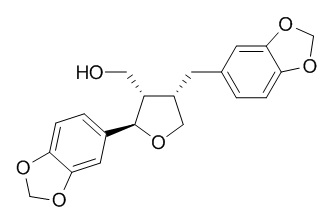Providing storage is as stated on the product vial and the vial is kept tightly sealed, the product can be stored for up to
24 months(2-8C).
Wherever possible, you should prepare and use solutions on the same day. However, if you need to make up stock solutions in advance, we recommend that you store the solution as aliquots in tightly sealed vials at -20C. Generally, these will be useable for up to two weeks. Before use, and prior to opening the vial we recommend that you allow your product to equilibrate to room temperature for at least 1 hour.
Need more advice on solubility, usage and handling? Please email to: service@chemfaces.com
The packaging of the product may have turned upside down during transportation, resulting in the natural compounds adhering to the neck or cap of the vial. take the vial out of its packaging and gently shake to let the compounds fall to the bottom of the vial. for liquid products, centrifuge at 200-500 RPM to gather the liquid at the bottom of the vial. try to avoid loss or contamination during handling.
Journal of Wood Science,2001,47(6) 476-82.
Lignans of Chamaecyparis obtusa[Reference:
WebLink]
METHODS AND RESULTS:
Heartwood ofChamaecyparis obtusa contains significant amounts of a dibenzylbutyrolactone lignan, hinokinin (8). This investigation demonstrated that the contents of 8 and a norlignan, hinokiresinol (12), were higher in the heartwood region than in the sapwood, indicating their nature of being heartwood extractives. Eleven lignans — xanthoxylol (1), 7-oxohinokinin (2), savinin (3), Dihydrosesamin (4), isoactifolin (5), sesamin (6), piperitol (7), hinokinin (8), pluviatolide (9), haplomyrfolin (10), and rnatairesinol (11) — were isolated from young shoots ofChamaecyparis obtusa cv. Breviramea.
CONCLUSIONS:
Eight lignans (1, 2, 4, 5, 7, 9,10, and11) were isolated from this plant for the first time. Chiral high-performance liquid Chromatographie analysis showed that8, 9, 10, and11, were found to be levorotatory and optically pure (>99% e.e.). Based on the chemical structures of the isolated lignans, possible biosynthetic pathways of8 are discussed.



